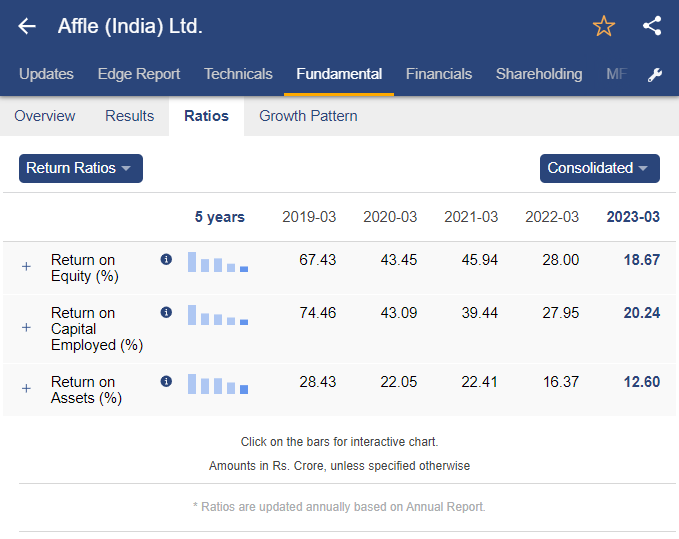Market coverage is among the most crucial factors to take into consideration when looking at AI-powered trading platforms. This will determine how many assets and markets are accessible. Market coverage is crucial because it permits you to diversify, explore the world's markets, and adjust various trading strategies. Here are 10 suggestions for evaluating the coverage of the platforms.
1. Evaluate Supported Asset Classes
Stocks: Ensure that the platform includes stocks from the top stock exchanges, which include NYSE, NASDAQ and LSE.
ETFs: Verify that the platform provides a variety of ETFs to give you a variety of exposure to different sectors, themes, and regions.
Futures and options: Check whether the platform is able to handle derivatives like options, futures and other leveraged instruments.
Forex and commodities: Assess if the platform includes forex pairs and precious metals, energy commodities, as well as agricultural commodities.
Cryptocurrencies: Verify if the platform you are using is compatible with major cryptocurrencies including Bitcoin and Ethereum as well as alternative currencies.
2. Make sure that your area is covered
Global markets. Your platform should cover the major global market, such as North America Europe Asia-Pacific and emerging countries.
Regional focus: Check whether the platform is focusing on specific market segments or regions that match your trading preferences.
Local exchanges. Make sure the platform supports exchanges that are regional or local to your location.
3. Delayed Data Vs. Delayed Data
Real-time information - Make sure the platform provides real-time market information to help you make timely decisions, especially for traders who are active.
Delayed data: Check if delayed data is available at no cost or at a lower cost. This could be enough for long-term investors.
Latency of data. Examine if your platform minimizes latency in real-time data feeds.
4. Evaluation of Data from the Past
In depth and breadth of data from the past: Make sure that the platform has ample historical data available (e.g. for at least 10 years) to allow backtesting.
Check the granularity of data from the past.
Corporate actions: Check if the historical information includes dividends and splits of stock.
5. Examine the market depth and order details
Level 2 data: Check that the platform contains Level 2 data for price discovery and for better execution.
Bid-ask Spreads: Verify that the platform is showing real-time spreads between bid and ask for exact pricing.
Volume data: Ensure that the platform provides specific volume data that can be used to study market liquidity.
6. Review the extent of coverage for Indices and Sectors
Major indices: Check that the platform contains major indices for benchmarking, index-based strategies and other uses (e.g. S&P 500, NASDAQ 100, FTSE 100).
Data specific to a sector to provide targeted analysis, look into whether the platform provides information on a specific sector (e.g. healthcare, technology or energy).
Custom-made indexes. Find out if you are able to create or track custom indices using your criteria.
7. Examine the integration of News and Sentiment
Feeds for news: Make sure the platform incorporates live feeds of news from credible sources, like Bloomberg and Reuters, for market-moving event.
Sentiment Analysis: Verify whether the platform has tools for analyzing sentiment that are built on news, social media, or other sources of data.
Event-driven Strategies: Verify whether the platform supports strategies that are triggered by events (e.g. economic reports or earnings announcements).
8. Verify Multimarket Trading Capabilities
Trading in cross-markets: The system should allow trading in different markets or asset classes with a single user interface.
Check if the platform is compatible with multicurrency accounts as well as currency conversions to facilitate international trading.
Support for time zones: Check that your platform supports the ability to trade across multiple time zones.
9. Review Alternative Data Sources
Find alternative sources of data.
ESG data: Check if the platform has environmental Governance, Social and Governance (ESG) information to help investors make socially responsible decisions.
Macroeconomic data - Make sure that the platform has macroeconomic data (e.g. inflation, GDP) for fundamental analysis.
Review Market Reputation and User Recommendations
User feedback: Use reviews from users to assess the credibility of the platform as well as market coverage.
Reputation of the industry: Find out whether there are any awards or experts who recognize the platform's coverage of the market.
Look for testimonials that demonstrate the effectiveness of the platform in particular markets and asset classes.
Bonus Tips:
Trial period: Take advantage of an unpaid trial or demo to evaluate the market coverage as well as data quality.
API access: Check to see whether the API of the platform supports customized analysis with market data.
Support for customers: Make sure that the platform provides assistance for questions related to data or markets.
These tips will help you assess the market coverage offered by AI trading platforms that predict/analyze price movements of stocks. So you'll be able to select the platform that provides you with the data and markets you need to be successful in trading. You can diversify your portfolio and profit from new opportunities with the help of broad market coverage. Have a look at the best ai trading for blog tips including ai trading bots, using ai to trade stocks, best ai stocks, ai trader, ai bots for trading, ai trading tools, best stocks to invest in, ai chart analysis, best stocks to invest in, stock analysis websites and more.

Top 10 Ways To Evaluate The Speed And Latency Ai Analysis And Stock Prediction Platform
For high-frequency, algorithmic, and active traders the area of speed and latencies are key factors when considering AI platforms for stock forecasting and analyzing. Millisecond delays can impact on the profitability of trading. Here are 10 of the best methods to gauge the speed and the latency of trading platforms.
1. Real-time data feeds: How can you assess them
Speed of delivery of data - Ensure that the platform is able to deliver real-time information with a minimal delay (e.g. an under-millisecond latency).
Check the data source's proximity to the major exchanges.
Data compression: Check whether your platform is using efficient data compression techniques to speed up data delivery.
2. Test the speed of trade execution
Time to process orders The duration it takes for the platform to process and complete trades after you've submitted an order.
Direct market access: Ensure whether the exchange allows direct orders to be sent to the exchange.
Check for detailed execution reporting that includes timestamps as well as confirmations of the order.
3. Examine the Platform Response
User interface (UI) speed: See how quickly the platform's UI responds to inputs (e.g., clicking buttons, loading charts).
Chart updates: Check if charts and visualizations update in real-time, without delay.
Performance of mobile applications: When using a mobile app, make sure that it's as fast as the desktop version.
4. Look for networks with low-latency infrastructure.
Server locations: Make sure that the platform uses low-latency servers situated near major financial hubs or exchanges.
Co-location service: See whether the exchange offers co-location, which allows the hosting of your trading algorithms on servers close to the exchange.
High-speed Networks: Check the platform's use of a fiber-optic high-speed network or other technologies that have low latency.
5. Review the results of backtesting and simulate speed
Find out how quickly the platform processes and analyzes the historical data.
Simultaneous simulation of trades: The platform should be capable of simulated live trading with no apparent delay.
Parallel processing: Check if the platform uses the concept of distributed computing or parallel processing to speed up complicated calculations.
6. Check the API Latency
API response time: This is the speed at the rate at which an API platform responds to requests.
Limits on rates. Check the rates of the API in order to avoid any delays when high-frequency trading.
WebSockets support: Verify that the platform supports WebSockets protocol for low-latency, real-time streaming of data.
7. Test Platform Stability using Load
High-volume trading: Play high-volume trading scenarios to see if the platform remains stable and responsive.
Check your platform out during periods of extreme market volatility.
See whether there are any tools available for testing strategies in extreme circumstances.
8. Examine Connectivity and Network
Internet speed requirements. Be sure your connection is fast enough to match the speed recommended by the platform to ensure maximum performance.
Redundant Connections: To prevent delay, verify that the platform is able to support redundant internet connections.
VPN latency: If you are using a VPN, verify whether it causes significant latency, and if the service has alternatives.
9. Check for Speed-Optimization Features
Pre-trade analytics: Make sure that the platform offers pre-trade analytics to optimize order routing and execution speed.
Smart order routing (SOR) often referred to as smart order routing, is a method to determine the fastest and the most cost effective execution venues.
Monitoring of latency: Ensure that your platform permits you to track and analyze your latency in real-time.
Review User Feedback & Benchmarks
User reviews: Read feedback from users to evaluate the platform's speed and latency performance.
Third-party benchmarks from third-party. Find benchmarks that are independent, or reviews that compare a platform's speed with other platforms.
Case studies: Check whether the platform offers case studies or testimonials highlighting its low-latency capabilities.
Bonus Tips
Free trial period: Try the platform's speed and latency in real-world scenarios by using an online demo or trial.
Customer support: Make sure the platform offers support for customers to help optimize latency and other issues.
Hardware specifications. Make sure the platform works with a specific type of hardware like high-performance computers.
Following these tips can aid in assessing the performance of AI trading platforms which predict or analyze price fluctuations in stocks. You will be able choose a trading platform which best suits the requirements of your trading and eliminates the chance of delays. A low latency is crucial for algorithmic and high-frequency traders, as even minor delays can impact the profitability. See the recommended ai stock market for site advice including ai stock prediction, best stock analysis website, ai stocks, best ai for stock trading, free ai trading bot, best ai trading platform, best copyright prediction site, best ai stock, investing in ai stocks, ai stocks to invest in and more.
